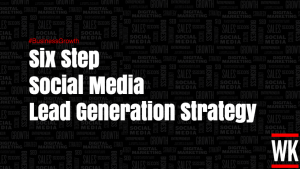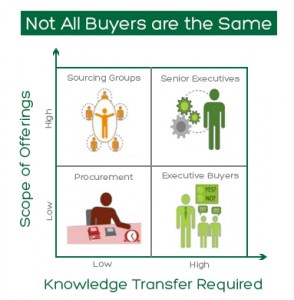
Ecommerce is the preferred way to shop these days. According to Disruptive Marketing, 80% of Americans have made an online purchase in the past month alone. Because a majority of consumers are choosing to interact with brands this way, businesses must strive to remain competitive and efficient.
Adapting to emerging marketing trends is the key to survive in any business. If you aspire to remain competitive in the coming years, you will need to hop on board this fast-paced world of e-commerce as soon as possible.
While there are many trends that you can apply, you need to know which ones can benefit your brand the most. Each business has unique goals and marketing needs. Different strategies work for different companies. Moreover, what is effective today may become irrelevant months down the road.
So as if you are a brand that is eyeing growth, you need to stay up to date with what’s changing and adopt the changes that can positively impact the business.
To make this task easy for you, here are some of the ecommerce trends that are dominating 2020:
1) Mobile Optimization
People are always on the go. They are using their mobile devices for everything, from communicating to shopping. According to outerbboxdesign.com, 79% of smartphone users have made a purchase online using their mobile devices.
If you want your brand to be successful, your website must cater to mobile users and offer mobile shopping. This is where your potential customers are. You must optimize your website to make the process of shopping as seamless as possible for the shopper.
With less typing and more clicking options, consumers can search or purchase with ease. Finger-friendly buttons such as tap-to-call or Call-to-Action (CTA) are now essential features on ecommerce websites.
The latest trend involves incorporating smartphone components such as GPS and camera to enhance the shopping experience. For instance, ‘near me searches’ can utilize the GPS feature while the camera can support Augmented Reality (AR) capabilities.
2)Utilizing more visual content
The use of visual content has significantly increased over the years. Brands are creating more visual content to entice consumers, whether it’s images of product details, videos, webinars, infographics, etc. But remember that the audience still demands content that adds value to their interactions.
The latest trends focus on the use of visual user-generated content on your website or social media profiles. It is important for two reasons. First off, consumers are interacting with your brand on a personal level by providing posts that add to your stories. Secondly, it helps in building a community around your brand. In this way, people can see, contribute, or comment on how your brand is influencing their lives.
3) Incorporating voice search capabilities
Voice search isn’t entirely a new concept. Virtual assistants like Alexa and Siri are based on voice technology. Search engines are continually updating their voice search features to improve user experience. Voice search capabilities are now being used to find answers and also to place orders online.
People are finding voice search exceptionally convenient, especially with the hands-free options. More importantly, it is becoming a more efficient, faster, and preferred mode of search.
Optimizing an ecommerce website for voice search can be challenging, but is not impossible. Some simple tips include utilizing content with more question phrases and long-tail keywords, increasing site speed, enhancing mobile responsive website designs, improving UX, and much more.
4) Sustainable products
With the rise in consumer awareness, the search for environmentally friendly products is no longer a fad. Consumers are more dedicated to taking responsibility for protecting Mother Nature. Environmentalism and sustainability are becoming huge trends in e-commerce.
Businesses are making strides to consider consumer preferences and come up with products that are sustainable and eco-friendly. To create sustainable products, BN3TH, a manufacturer of men underwear, began using Modal fibers in over 90% of its products. Modal fiber is manufactured by environmentally responsible production processes and is biodegradable.
Lush Cosmetics, a famous cosmetics brand based in the UK, is using BPA-free packaging, which is also 100% post-consumer recycled. Big companies like Apple and Intel support sustainability campaigns and donate for the cause. These are just a few examples of brands’ inclination towards sustainability.
From packaging to products to making donations, marketing your brand’s contributions for sustainability can make you a preferred choice for the consumers.
5) Better customer support
Every business knows the immense value behind customer support. But when it’s applied to e-commerce, it can significantly boost the shopping experience. Whenever you place the needs of your customers above everything else, they will keep coming back to your brand.
Consumers prefer to communicate with brands directly, whether to find answers to their questions or resolving common concerns. Ecommerce brands must, therefore, increase channels for communications through chatbots, live chat support, social media messaging apps, and much more.
These rising e-commerce marketing trends are more efficient as they help solve problems quickly and easily.
6) Influencer marketing
Though this is not a new trend, it is one that is dominating e-commerce. As people spend more time on social media, brands are now eyeing to target new customers on these platforms. For this reason, the trend of using an influencer to promote a product is on the rise.
These influencers hold considerable sway over the choices of customers. More importantly, it is proving to be a great tactic to market the brand and reach a large consumer base. For such strategies to be beneficial, brands must connect and interact actively with the target audience.
Having a strong brand reputation then helps leverage influencer reach, whether that’s through discount codes, contests, or giveaways.
7) QR Codes
QR codes are a recent addition to marketing strategies. Customers using mobile devices can easily scan these codes to access information about a product or brand.
As an emerging trend, it holds massive potential. Brands can utilize QR codes in multiple ways to market themselves, such as linking a product back to your ecommerce site or offering customers with an additional discount or the chance to win a surprise gift.
The fact that these codes are encrypted pique the curiosity of the consumers. It can enhance engagement, drive traffic to your website, and increase sales.
Final thoughts
E-commerce marketing requires planning and knowledge of current trends. Whether its consumer behavior or new technological developments, knowing how various aspects can influence your business is essential.
More importantly, learning how to use these elements to grow your business is necessary. It distinguishes a successful brand from ordinary brands. The important question here is, are you incorporating the latest marketing trends to make your brand stand out?
Digital & Social Articles on Business 2 Community
(49)










